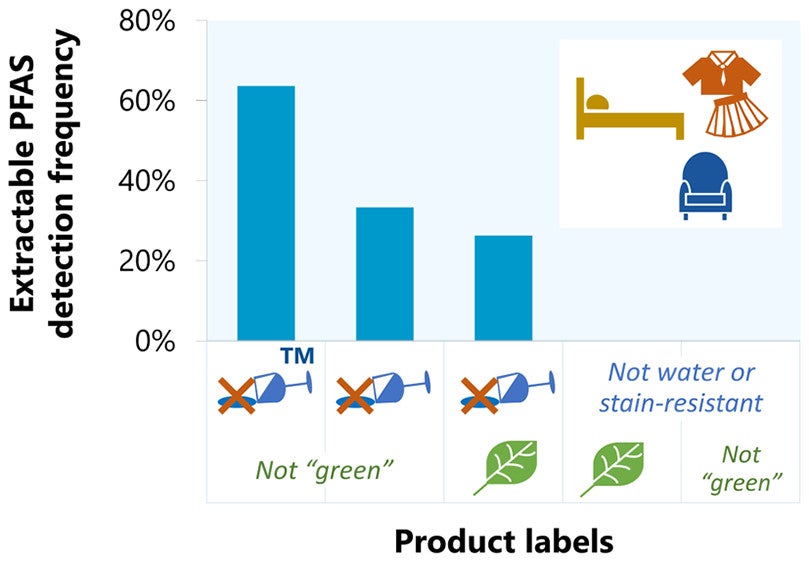Per- and polyfluoroalkyl substances (PFAS), a class of over 9000 compounds, has been exploited by fluorochemical industries and product manufacturers to produce popular water- and stain-resistant textiles and clothing, aqueous film forming foams, non-stick cookware, and components for medical devices. The intrusive nature of these compounds goes beyond their presence in the environment but is also noted by their detection in drinking water supplies and human blood in majority of the U.S. population.
Pathways of human exposure are most often attributed to diet, but a recent study led by researchers at the Silent Spring Institute found that nonessential uses of PFAS incorporated into products used by children and adolescents are of growing concern.
Investigation of PFAS presence went beyond the products advertised as water- and/or stain-resistant and included products with “green assurances” – to include products with no claim to water- or stain-resistance. Researchers specifically investigated materials under categories of apparel, bedding, and furnishings, including school uniform shirts and pants, casual wear, face masks, bedding sheets, area rugs, and upholstered chairs.
Researchers analyzed a total of 93 products for total fluorine, the total sum of PFAS present, and also accounted for PFAS that are produced from degradation of existing compounds.
Research found total fluorine generally ranged from 10 to 3660 parts per million (ppm) in 54 of 93 products, with highest concentrations in a water- and stain-resistant school uniform shirt. Both clothing and upholstery had the highest detection frequencies of total fluorine (approx. 79% of total samples). From the targeted analysis, researchers observed the reportable presence of 11 PFAS compounds. Of those 11, nine were perfluoroalkyl carboxylic acids (PFCA) and two were perfluoroalkyl sulfonic acids (PFSA). Generally, products labeled as water- and/or stain-resistant had higher detection frequencies and concentrations of targeted PFAS than the alternative products. This research emphasizes that green products cannot guarantee, with consistency, an absence of PFAS.
Read the full article, “How Well Do Product Labels Indicate the Presence of PFAS in Consumer Items Used by Children and Adolescents?”, Rodgers, K., et al.


